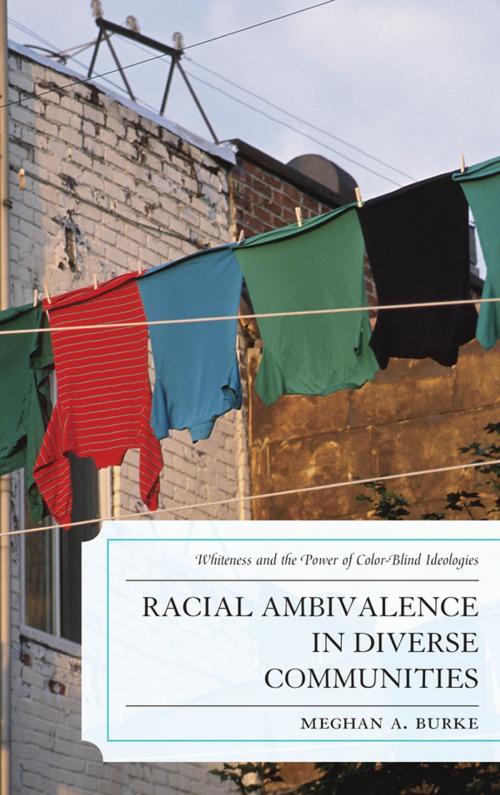Racial Ambivalence in Diverse Communities
Whiteness and the Power of Color-Blind Ideologies
Nonfiction, Social & Cultural Studies, Social Science, Sociology, Urban| Author: | Meghan A. Burke | ISBN: | 9780739166680 |
| Publisher: | Lexington Books | Publication: | June 15, 2012 |
| Imprint: | Lexington Books | Language: | English |
| Author: | Meghan A. Burke |
| ISBN: | 9780739166680 |
| Publisher: | Lexington Books |
| Publication: | June 15, 2012 |
| Imprint: | Lexington Books |
| Language: | English |
This book makes use of in-depth interviews with the residents most active in shaping the racially diverse urban communities in which they live. As most of them are white and progressive, it provides a unique view into the particular ways that color-blind ideologies work among liberals, particularly those who encounter racial diversity regularly. It reveals not just the pervasiveness of color-blind ideology and coded race talk among these residents, but also the difficulty they encounter when they try to speak or work outside of the rubric of color-blindness. This is especially vivid in their concrete discussions of the neighborhoods’ diversity and the choices they and their families make to live in and contribute to these communities. This close examination of how they wrestle with diversity in everyday life reveals the process whereby they unintentionally re-create a white habitus inside of these racially diverse communities, where despite their pro-diversity stance they still act upon and preserve comfort and privileges for whites. The book also provides a close examination of white racial identity, as the context of a diverse community provides both the catalyst and, significantly, the space for an examination of an unarticulated racial consciousness, which has implications for our study of whiteness more generally. The layers of ambivalence and pride surrounding the fact of diversity in these neighborhoods and residents’ lives reveal both limitations and hope as the nation itself becomes more diverse. This critical and yet compassionate book extends our understanding of contemporary racial ideology and racial discourse, as well as our understanding of the complexities of whiteness.
This book makes use of in-depth interviews with the residents most active in shaping the racially diverse urban communities in which they live. As most of them are white and progressive, it provides a unique view into the particular ways that color-blind ideologies work among liberals, particularly those who encounter racial diversity regularly. It reveals not just the pervasiveness of color-blind ideology and coded race talk among these residents, but also the difficulty they encounter when they try to speak or work outside of the rubric of color-blindness. This is especially vivid in their concrete discussions of the neighborhoods’ diversity and the choices they and their families make to live in and contribute to these communities. This close examination of how they wrestle with diversity in everyday life reveals the process whereby they unintentionally re-create a white habitus inside of these racially diverse communities, where despite their pro-diversity stance they still act upon and preserve comfort and privileges for whites. The book also provides a close examination of white racial identity, as the context of a diverse community provides both the catalyst and, significantly, the space for an examination of an unarticulated racial consciousness, which has implications for our study of whiteness more generally. The layers of ambivalence and pride surrounding the fact of diversity in these neighborhoods and residents’ lives reveal both limitations and hope as the nation itself becomes more diverse. This critical and yet compassionate book extends our understanding of contemporary racial ideology and racial discourse, as well as our understanding of the complexities of whiteness.















